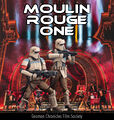Fawn With the Wind: Difference between revisions
Jump to navigation
Jump to search
No edit summary |
No edit summary |
||
| Line 18: | Line 18: | ||
== External links == | == External links == | ||
* [https://twitter.com/GnomonChronicl1/status/ | * [https://twitter.com/GnomonChronicl1/status/1557945577970831360 Post] @ Twitter (11 August 2022) - Trailer | ||
* [https://twitter.com/GnomonChronicl1/status/1512397549092708357 Post] @ Twitter (8 April 2022) | * [https://twitter.com/GnomonChronicl1/status/1512397549092708357 Post] @ Twitter (8 April 2022) | ||
* [https://twitter.com/GnomonChronicl1/status/1500130428929380355 Post] @ Twitter (5 March 2022) | * [https://twitter.com/GnomonChronicl1/status/1500130428929380355 Post] @ Twitter (5 March 2022) | ||
Revision as of 21:23, 11 August 2022
Fawn With the Wind is a 1939 American film set in the American South against the backdrop of the American Civil War and the Reconstruction era which tells the story of fawn, a light yellowish tan color.
In the News
Moulin Rouge One is a 2001 jukebox musical romantic space opera film about a young English poet, Christian, who falls in love with cabaret actress and rebel Jyn Erso, the star of the Moulin Rouge.
Fiction cross-reference
Nonfiction cross-reference
External links
- Post @ Twitter (11 August 2022) - Trailer
- Post @ Twitter (8 April 2022)
- Post @ Twitter (5 March 2022)
- Fawn (color) @ Wikipedia
- Gone With the Wind (film) @ Wikipedia
- Gone With the Wind - trailer @ YouTube

